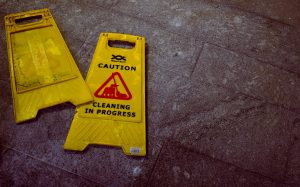ExxonMobil Corp. has been fined $165,000 by federal regulators for safety violations over an explosion that occurred in 2016 at a large oil refinery in Baton Rouge, Louisiana. The United States Occupational Safety and Health Administration (OSHA) issued a total of nine citations, including citations for inadequate training and equipment maintenance at the aging facility. Exxon has stated that it is contesting OSHA’s most recent findings and the fines the agency imposed.
The facility in question is an alkylation unit that makes octane-boosting components for gasoline. The explosion occurred on November 22, 2016, when a worker removed the cover of a malfunctioning valve on an isobutane line and used a wrench to turn the valve system. As the operator turned the valve system, portions of the valve fell out, releasing isobutane and igniting a welding machine 70 feet away. As a result of the explosion, one worker was knocked off a scaffold and left dangling over the fire, while another worker was burned over most of her body. In total, four workers were injured, two of them severely.
This is not the first time the Baton Rouge facility has drawn the federal government’s ire; he facility was faulted five years ago by the U.S. Environmental Protection Agency (EPA) for failing to address corrosion on pipes and valves and for inadequate shutdown and emergency procedures provided to workers.In 2012, the EPA inspected the Baton Rouge refinery as part of a risk management prevention program and found Exxon had not examined more than 1,000 underground pipes in five years, many of which were corroded, according to the agency’s report on the inspection. The EPA also found that emergency and shutdown procedures failed to provide needed details for operators.According to the latest OSHA citations, Exxon’s safety procedures and training for operators on the alkylation unit were lacking, equipment was not properly maintained, and required safety inspections were not carried out within the required time periods. Eight of the nine citations were listed as “series,” each carrying a fine of $12,675. The ninth fine was for failing to carry out external visual and ultrasonic inspections of piping, and carried a fine of $63,373. The ninth fine was much higher than the fines for the other citations because OSHA cited Exxon in 2016 for violating the same inspection standard at a mother of its refining facilities in Baytown, Texas
 Any injury can be a lot to deal with, but injuries sustained at work can be particularly complicated. Legal issues aside, perhaps the biggest challenge is what to do about your lost income. Thankfully, workers’ compensation is available to most employees, but it’s important to understand how workers’ compensation relates to other options you may have. In this post and the next, we’ll cover the options available to you in order to get the compensation you need.
Any injury can be a lot to deal with, but injuries sustained at work can be particularly complicated. Legal issues aside, perhaps the biggest challenge is what to do about your lost income. Thankfully, workers’ compensation is available to most employees, but it’s important to understand how workers’ compensation relates to other options you may have. In this post and the next, we’ll cover the options available to you in order to get the compensation you need.  Georgia Injury Lawyers Blog
Georgia Injury Lawyers Blog


 Workplace injuries are more common than you may think. In a
Workplace injuries are more common than you may think. In a